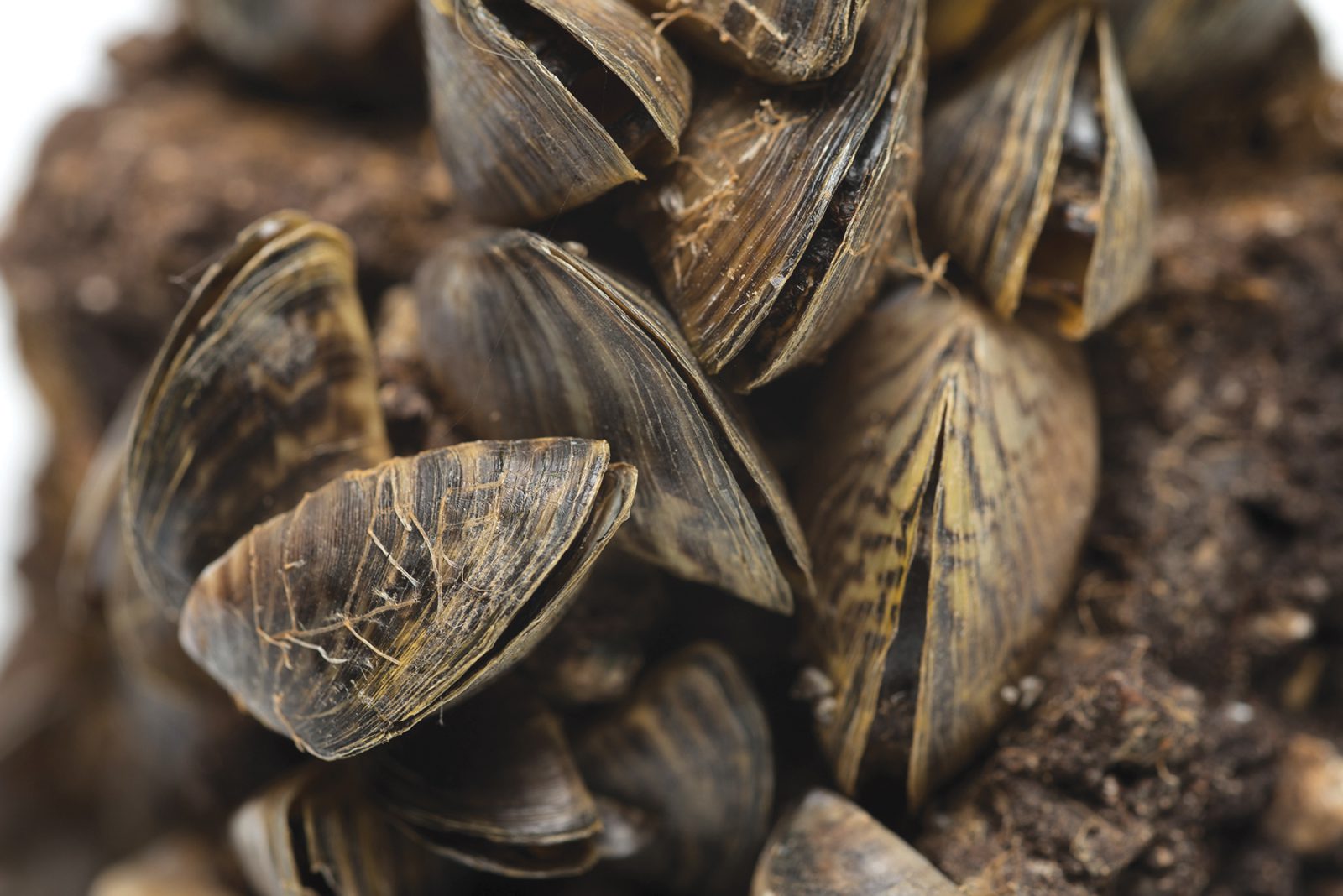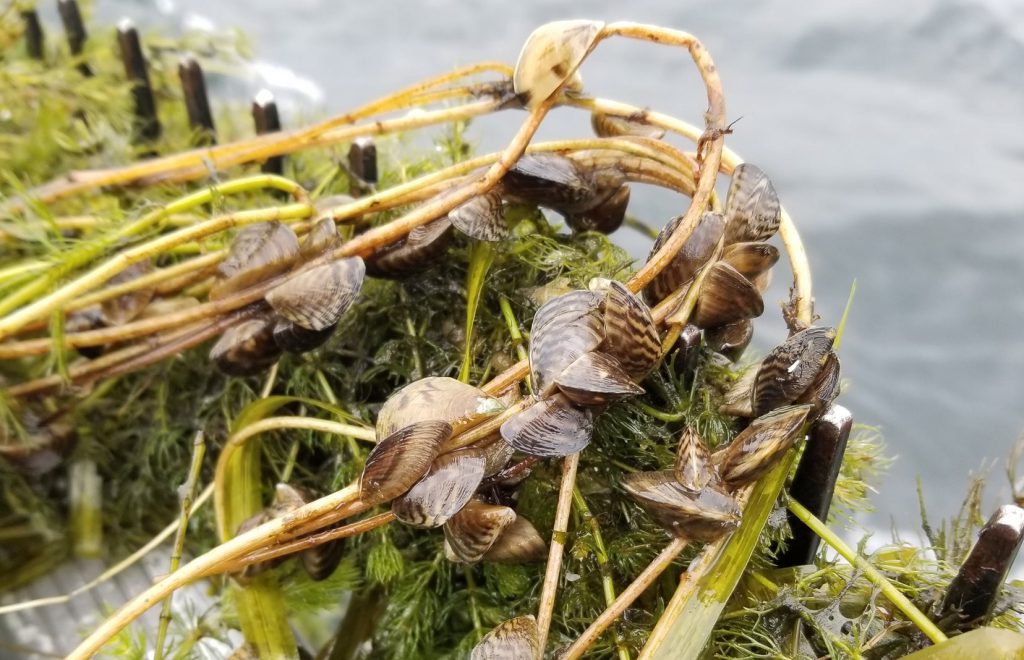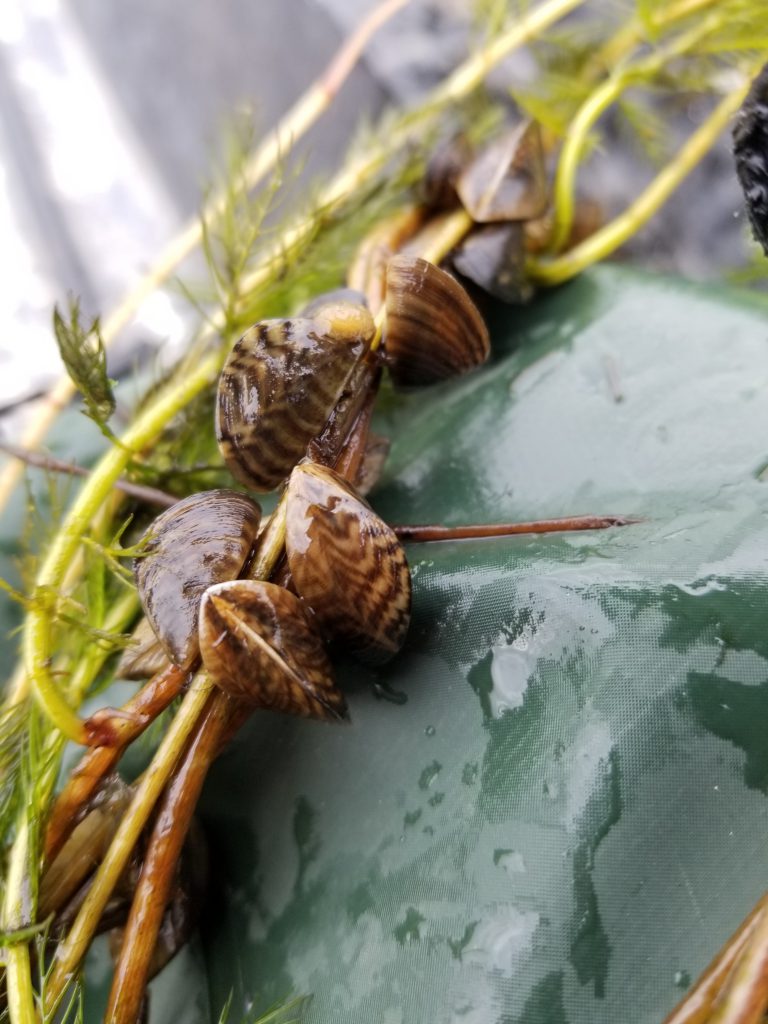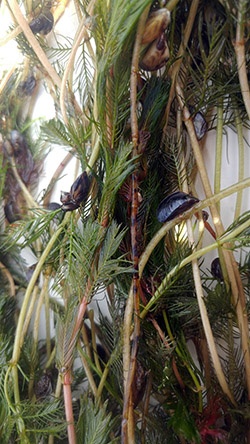

Are Zebra Mussels Harmful?
Widespread occurrences of both Zebra mussels (Dreissena polymorpha) and Quagga mussels (D. rostriformis bugensis) have been well documented since their initial confirmation within the Great Lakes during 1986 and 1991, respectively. These two species of invasive aquatic shellfish have been a focus of research and public education as their infestations have rapidly expanded to include a major portion of the Northeastern United States, along with localized infestations now confirmed west of the Rockies. While many of the significant ecological impacts are mutually shared between both species of mussels, there are key morphological and potential habitat distinctions that can aid in identifying the threat level of introduction, especially within small lake and pond environments.
Zebra and Quagga mussels are prolific invaders that have the ability to spread quickly within a waterbody. During a single spawning season, an individual female mussel can produce more than one million eggs. Both species hatch into a veliger phase, which is a microscopic planktonic larva that may swim for several weeks, before achieving a juvenile stage, when they develop thread-like structures called Byssal threads. Byssal threads enable the mussels to attach to a substrate and develop into an adult. Each species can potentially grow up to two inches in size, although both species typically remain the size of a dime. These are the only two freshwater mussel species that can attach using Byssal threads.

Once mussels reach adulthood and colonies are rapidly established, their impact is immediately apparent via negative impacts to their surrounding aquatic environment. Zebra and Quagga mussels frequently out-compete other native filter feeders for resources such as food and habitat. Native mussels are generally larger in size, allowing for Quagga and Zebra mussels to colonize on their shells. Typically, when a native mussel has either Zebra or Quagga mussels attached to its shell, it is unable to move, feed and reproduce efficiently.
Both Zebra and Quagga mussels are filter feeders and an individual mussel has the capacity to filter up to one liter of water per day. Through filtering, mussels are capable of absorbing contaminants within their tissue, with the bio-accumulated concentration passed on to predatory fish and water birds. Zebra mussels have displayed a preferential feeding pattern that targets desirable phytoplankton communities and the associated zooplankton. The over-consumption of beneficial plankton can allow Harmful Algal Blooms and cyanobacteria to flourish at potentially toxic levels, threatening the ecological health of the entire ecosystem.

Mussel filtering also increases water clarity. While this initially sounds like a benefit, it allows sunlight to penetrate deeper than usual, spurring the growth of nuisance aquatic plants at greater depths than the waterbody would have naturally and historically supported. The corresponding excessive aquatic vegetation, which would likely be dominated by invasive aquatic species having a greater ability to expand and develop more rapidly than native species, can hinder recreational uses and impart accompanying ecological damage.
An additional detrimental impact of both species of mussels is their ability to clog water intake pipes used for irrigation, drinking water, and power plants. Intake pipes are suitable habitat because they provide mussels with protection and continual water flow with food and oxygen. Dense colonies reduce intake volume and flow, and in extreme cases, can completely clog intake pipes. Mussel infestations can also lead to accelerated pipe corrosion and potential issues with noxious odors and tastes. Zebra mussels have greater Byssal thread strength than Quagga mussels, allowing them to be a greater threat in higher water flow systems.

Although Zebra mussels have been garnering a higher level of media attention and public education focus, it has been observed that Quagga mussels may be displacing Zebra mussels where both species are widespread in the Great Lakes region. This phenomenon signals that Quagga mussels may pose a greater threat to spread in quiescent waters. While both mussel species append themselves to hard substrate, Quagga mussels are adaptive in colonizing along benthic habitat, with growth supported in soft, sandy bottoms, and even attaching to submersed aquatic plant growth. Empirical studies have shown that Quagga mussels are capable of enduring lower water temperatures, showing better reproduction and development than Zebra mussels within a colder water habitat.
Ultimately, both Zebra Mussels and Quagga Mussels are highly invasive and pose a significant threat to our freshwater lakes, ponds, and rivers, but efforts to reduce their impact are not futile. Currently, public education and proactive management remain the cornerstone of active management to prevent further spread and minimize both ecological and financial impact. Boaters, anglers, and divers are the first line of defense in these efforts and should understand how to identify invasive mussel species, always inspect their equipment before and after water recreation, and alert the appropriate authorities at the first sign of the invaders. Through dedication, patience, and education, it is possible to make strides in the control of these highly invasive species.
Contact the experts at 888-480-5253 for your lake, pond, wetland, and fisheries management needs.
SOLitude Lake Management is a nationwide environmental firm committed to providing sustainable solutions that improve water quality, enhance beauty, preserve natural resources and reduce our environmental footprint. SOLitude’s team of aquatic resource management professionals specializes in the development and execution of customized lake, pond, wetland and fisheries management programs that include water quality testing and restoration, nutrient remediation, algae and aquatic weed control, installation and maintenance of fountains and aeration systems, bathymetry, mechanical harvesting and hydro-raking, lake vegetation studies, biological assessments, habitat evaluations, and invasive species management. Services and educational resources are available to clients nationwide, including homeowners associations, multi-family and apartment communities, golf courses, commercial developments, ranches, private landowners, reservoirs, recreational and public lakes, municipalities, drinking water authorities, parks, and state and federal agencies. SOLitude Lake Management is a proud member of the Rentokil Steritech family of companies in North America.









